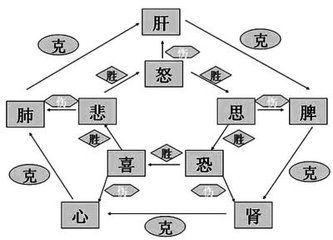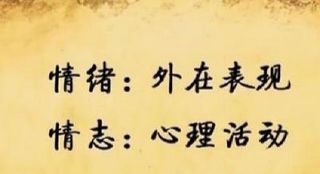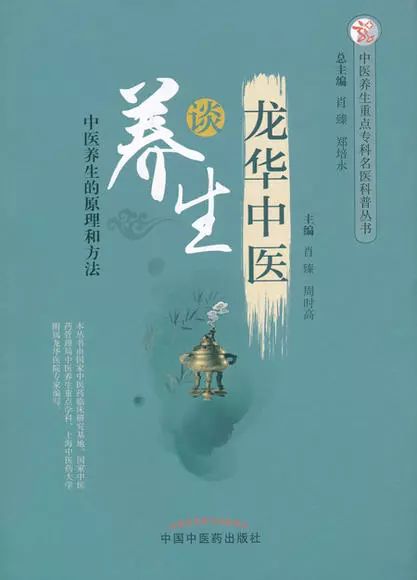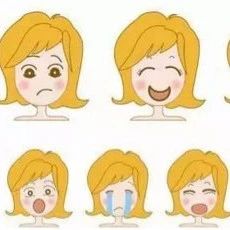
Click the aboveblue text to follow us
Editor’s Introduction
If you pay attention, you will notice that every time we visit a doctor, they always remind us at the end: “Keep your mood happy and stable!” This phrase is mentioned so commonly and formulaically that people often overlook its importance, thinking that the effect of “emotions” is too small compared to the medicine we take. Is that really the case? In fact, emotions can both cause and cure diseases—
Impact of Emotional Changes on Health
Everyone experiences the seven emotions and six desires; it is a normal physiological phenomenon. The expression of emotions is a common human trait and an instinctive manifestation. Under normal circumstances, various emotional activities can express feelings and play a coordinating role in physiological functions. When emotions such as joy, anger, worry, anxiety, sadness, and fear are suppressed and not adequately released, they can be harmful to health and even lead to various diseases. If emotions can be expressed and released appropriately, purposefully, and reasonably, they can benefit both physical and mental health. However, if emotional fluctuations are too prolonged or intense, exceeding normal limits and the body’s self-regulatory capacity, they can disrupt the functions of the organs and the flow of qi and blood, leading to disease. At this point, the seven emotions become pathogenic factors. Therefore, the effects of emotions on the body depend not only on the emotions themselves but also on people’s attitudes towards them and how they use their emotions.

The seven emotions each have their own characteristics, and the impact of emotions on health follows certain patterns. Joy is a manifestation of happiness when things go as one wishes or when one feels interesting, leading to a lively and outward expression, thus associated with the fire element and corresponding to the heart. Anger arises from encountering situations that do not align with one’s expectations, leading to displeasure or resentment, which can cause qi to become stagnant and can lead to excessive upward movement of qi, thus associated with the wood element and corresponding to the liver. Worry is the anxiety about an unknown outcome that one does not wish to happen, leading to a state of anxiety and depression, which tends to cause qi to contract, thus associated with the metal element and corresponding to the lungs. Thought is generally understood as contemplation or consideration; ancient scholars believed it belonged to the earth element and corresponded to the spleen. However, if thought is solely understood as contemplation, it becomes difficult to align with emotional responses. Thought also encompasses various meanings of sorrow and grief, representing complex emotional reactions. Sadness is the painful emotion arising from mental distress, disappointment, and despair, resembling the desolation of autumn leaves falling, characterized by a lack of vitality and inward qi movement, thus associated with the metal element and corresponding to the lungs. Fear arises when the body faces danger and feels powerless to escape, leading to extreme mental tension, which often causes qi to descend, thus associated with the water element and corresponding to the kidneys. Shock occurs when one suddenly encounters an unexpected event, leading to a sudden tension and fear, which can disrupt the flow of qi and is characterized by suddenness, thus associated with the wood element and corresponding to the liver.

Emotional pathology is related not only to the nature of the emotions themselves but also to the intensity of their stimulation. The intensity of emotional stimulation can generally be divided into two categories: explosive stimulation and gradual stimulation. Explosive stimulation refers to sudden emotional shocks, such as unexpected major setbacks, disasters, unforeseen significant gains, or unbearable pain. These intense, sudden stimuli can disrupt the flow of qi and blood, leading to acute illnesses or even sudden death. The Huainanzi states: “Great anger breaks yin, great joy falls into yang, great worry leads to internal collapse, and great fear causes madness.” Diseases caused by explosive stimulation often present acutely and severely, sometimes resulting in sudden death. Among the seven emotions, joy, anger, shock, and fear are often conditions that arise from excessive stimulation. Clinical observations show that sudden death due to heart yang collapse caused by emotional upheaval, liver yang transforming into wind leading to stroke, and sudden blindness, deafness, or madness are mostly related to joy, anger, shock, and fear. Gradual stimulation refers to prolonged unresolved issues that maintain a persistent abnormal mental state over time, such as worry, mental tension, or prolonged sadness. Such emotional stimuli can deplete vital energy, disrupt qi flow, and lead to illness. The Suwen states: “Endless desires and worries exhaust the spirit, leading to the loss of vitality and the inability to recover from illness.” Emotional stimuli from worry, thought, and sadness often arise from prolonged negative mental states, leading to chronic illness. Therefore, it is essential to adopt appropriate methods to regulate emotions based on the characteristics of their pathogenic effects.
Modern medical research has found that among all adverse factors affecting the human body, negative emotions are the most likely to lead to premature death. When a person’s mental state is normal, their ability to adapt to the environment and resist disease increases, thus playing a preventive role against illness. After falling ill, a good mental state can accelerate recovery, and psychological principles can be utilized to treat diseases. In summary, maintaining a good emotional state is crucial not only for health and longevity but also for daily life.
If you want to know more about methods for emotional regulation and health preservation, you can refer to the recommended book—
Book Recommendation

“Discussion on Health Preservation in Traditional Chinese Medicine”
This series is a common disease Q&A series compiled by the Shanghai Hualong Hospital, a key specialty in TCM health preservation under the National Administration of Traditional Chinese Medicine. This series provides comprehensive and accessible answers to common diseases such as lung disease, rheumatism, liver disease, brain disease, kidney disease, heart disease, tumors, and TCM health preservation, making it an authoritative and practical popular science reading.
Click the book cover to view details
END
Copyright Statement
Some content of this article is excerpted from “Discussion on Health Preservation in Traditional Chinese Medicine” (published by China Traditional Chinese Medicine Press, edited by Xiao Zhen and Zhou Shigao), and the final interpretation rights belong to the original authors. This article is recommended and published by Yue Du Zhong Yi (WeChat ID: ydzongyi), with cover and illustrations sourced from the internet, and copyright belongs to the original authors. If there are any improper citations, please contact us for removal. Unauthorized reproduction is prohibited!

 Click “Read the original text” to bring home a good book.
Click “Read the original text” to bring home a good book.

